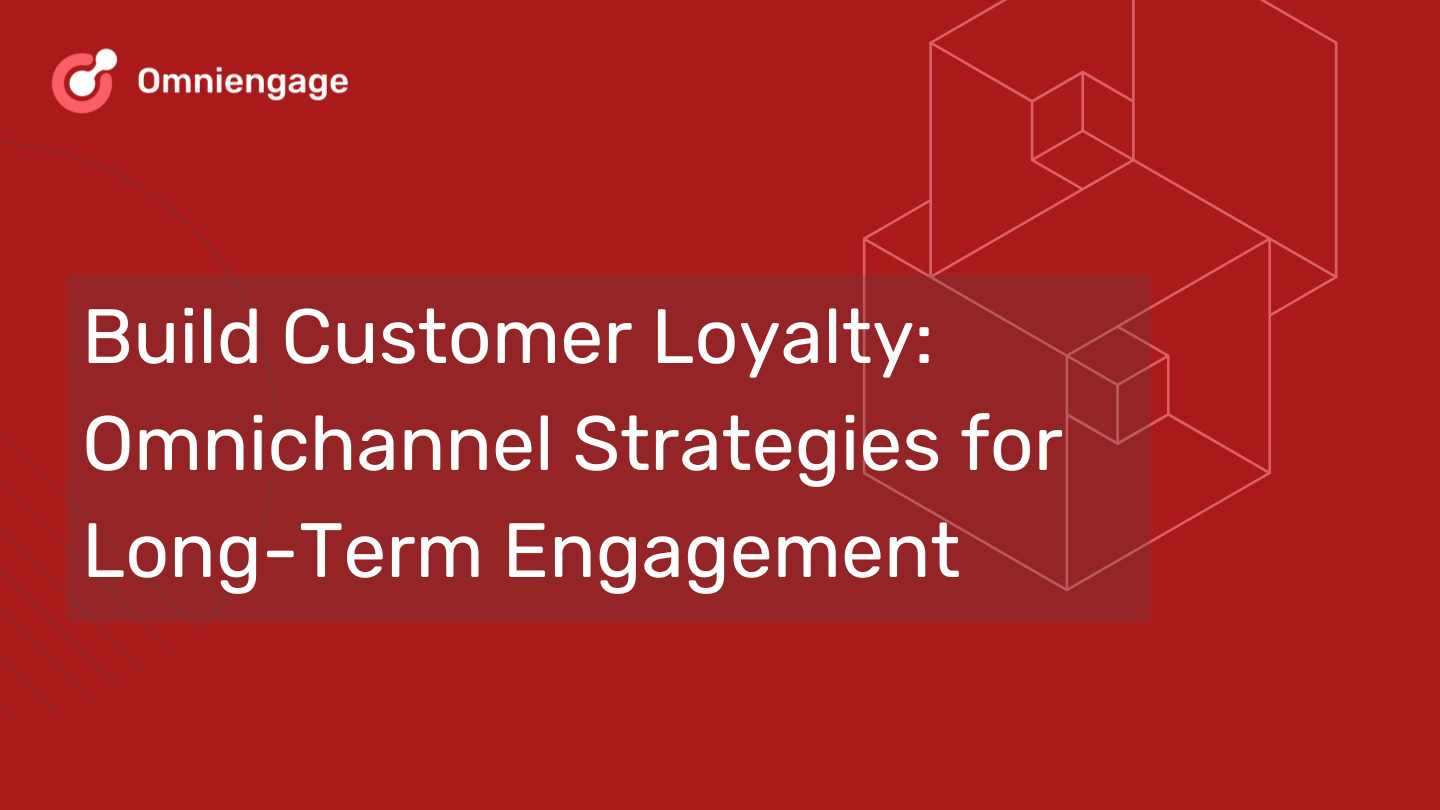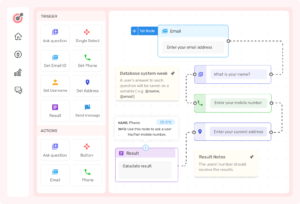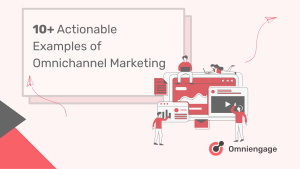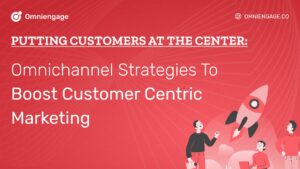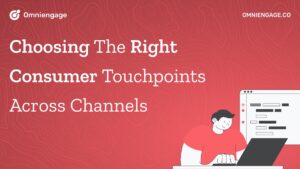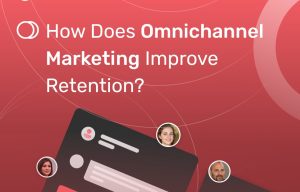Having a strong brand presence goes hand in hand with fostering customer loyalty. While attracting new customers is essential for expanding your reach, engaging with your existing customers genuinely helps retain them and keep churn rates low. Remember, customers are constantly exploring options, so assuming their interaction ends at a sale is a missed opportunity. A customer’s post-purchase experience is where businesses need to shine to cultivate loyalty.
According to Amazon and Digiday1, the top two goals businesses strive to achieve with omnichannel marketing campaigns in 2023 were:
1️⃣ Building customer trust and loyalty
2️⃣ Increasing sales
Managing multiple channels and measuring campaign success can be challenging. Do you face difficulties with selecting effective channels, measuring accurately, or demonstrating cross-channel impact? Read on to understand how you can employ marketing campaigns across channels for building customer loyalty.
What is Customer Loyalty?
Customer loyalty goes beyond mere transactions; it is about the relationship between your brand and its customers and the extent to which they are willing to interact with and value the impact of your brand on its audience. With a unified view of audience interactions you can see how customers interact on your website or mobile app. This can be the key to building the right audience for loyalty campaigns.
You can use several metrics to determine how much customers are advocating for your business, such as promoter score, customer loyalty, and customer engagement. Also, you can examine repurchase and upsell ratios to assess your product’s performance. Finally, the Customer Loyalty Index and Customer Lifetime Value reflect customers’ overall relationship with your brand.

Questions that assess customer loyalty
Customer loyalty is measured by assessing users’ response to these questions –
- How likely are you to recommend us to your friends and family?
- How likely are you to buy from us again in the future?
- How likely are you to try our other products?
If you want to know whether customers like your brand experience, you can make use of these customer loyalty metrics –
- Net Promoter Score is a survey that measures customer loyalty by analysing the proportion of promoters, detractors, and passive customers.
- Customer Engagement Score measures customers’ use of your services. You can use it to compare segment performance and identify at-risk customers. The score is an identification of renewals, upgrades, and purchases.
- Repurchase Ratio is depicted by the number of repeat purchasers divided by the number of one-time purchasers. This gives you a direction to reduce your cost per acquisition.
- Upsell Ratio refers to existing customers buying a higher-value offering from you instead of the primary product version.
- Customer Loyalty Index is a cumulative index that assesses the brand on the NPS, Upsell, and Repurchase ratios.
- Customer Lifetime Value is crucial for businesses. CLV is measured by determining the total revenue a customer generates throughout their relationship with the company. You can identify valuable customer segments and encourage a long-term focus on customer relationships rather than short-term profits.
Ways for Building Customer Loyalty
Now that you’re aware of what metrics are calculated towards improving customer engagement, let’s get to how marketing campaigns can build customer loyalty:
- Offering discounts based on points earned.
- Pricing-based deals through tiered membership.
- Referral based on introducing friends to the service.
- Leveraging user-generated content gathered via gamification on social media.
- Exclusive sneak peak and deal access through email marketing.
Building customer loyalty can be a long process, and there are many factors that contribute to it. One way to gauge how well you’re doing is to see how engaged customers are with your brand after making a purchase.
How does omnichannel marketing build customer loyalty?
Omnichannel marketing creates a unified customer experience by meeting customers wherever they are, whether online, in-store, or on their mobile devices. This unified approach allows brands to provide consistent messaging and offers across all channels. As customers engage with a brand across various touchpoints – website, social media, email, offline stores, etc. – brands gain valuable insights into customer preferences and shopping patterns. These insights help to deliver customized communications and unique offers to each customer tapping into their high intent micro moments.
In essence, omnichannel marketing fosters meaningful customer relationships. By providing a personalized omnichannel experience, brands demonstrate a deep understanding of their customers. This level of care and customer service cultivates loyalty over time. Omnichannel marketing done well leads to higher lifetime value and long-term revenue growth by building trust and emotional connections between customers and brands.
Strategies + Examples of Customer Loyalty Campaigns
Many businesses offer perks like loyalty rewards, discounts, and special deals to keep customers happy. But not many businesses connect all these dots to craft a seamless customer experience. Customers might feel lost or unsatisfied when there’s no clear value package. This could result in less shopping, smaller purchases, or even switching brands.
Conversely, a unified value proposition helps avoid disjointed experiences and suboptimal deals. By developing an integrated approach that combines loyalty tactics and pricing strategies, your business can deliver customers a more personalized and valuable experience. This, in turn, will increase customer retention, engagement, and growth.

Touchpoint #1. Email Programmes
Want to connect with your customers on a deeper level? Instead of bombarding them with sales pitches, offer valuable information they’re excited to read. Use smart strategies to answer questions such as:
- What is the optimal next move for the customer?
- How open are they to promotions, and does this differ by category or product?

Personalised loyalty campaigns
A customer loyalty email campaign that is personalized based on customer preferences and behavior increases brand affinity. News about a brand is often a powerful trigger. The news should always be relevant, whether it’s about new products, features, or presenting products in a fresh light to appeal to new types and segments of customers.
Example: Apple’s Tech News
Apple outpaced its competitors by introducing new ideas and delivering a unique shopping experience. They roll out personalized emails through email programs, sharing the latest product innovations, granting exclusive perks, and sharing captivating content. This targeted approach keeps customers interested in the brand, makes them feel valued, and strengthens their connection with Apple, leading to increased engagement and loyalty.
Touchpoint #2. B2B Sales by Customer Teams
Another way to build customer loyalty is to offer benefits and rewards for their loyalty through your customer support team, with better target offers.
Find out the optimal moments and channels for customer interaction with this question: when and where is the best time for the customer to interact? For example, enhance the initial onboarding experience and support after sales. Assist purchasers in maximizing product usage whenever feasible. Combine these suggestions with a follow-up email after the sale to reinforce your commitment to customer satisfaction.
If you can equip your sales and customer service to provide customised assistance, you will aim to make each sale more than just a transaction, leaving your customers returning for more.
Touchpoint #3. Membership Engagement Tiers
Using pricing strategically can supercharge loyalty programs, giving you new ways to wow your customers. Imagine this: your prices become like magnets, attracting even more sign-ups from new customers. Plus, by tying the value directly to your program, you’re building a shopping journey that keeps customers coming back for more. You can turn casual shoppers into your biggest fans who will love what you have to offer.

1. Tiered loyalty programs
A tiered system, based on customer engagement or spending, can effectively motivate long-term customer retention. Higher tiers often receive better rewards or exclusive benefits. It incentivizes higher-value transactions as well as upselling by customer progression. It also differentiates rewards for more loyal customers. Industries like hotels, and credit cards usually have these systems.
Example: Marriott Bonvoy
Mariott has employed different membership tiers like Silver, Gold, and Platinum. Members earn points for stays and enjoy benefits like room upgrades and late check-outs based on their tier.
2. Membership loyalty programs
Membership loyalty programs foster customer loyalty by offering exclusive benefits, content, or products. They work well for premium services, clubs, or subscriptions. Customers pay a membership fee to access exclusive benefits, discounts, or services.
Example: Airline Industry
Airlines have been crushing it with awesome perks like extra miles, free bag checks, prime seats, and sweet discounts for their VIP members. By keeping the rewards in-house with mileage and hooking you up with upgrades for spending more, they’ve turned travel loyalty programs into profit drivers.
Touchpoint #4. Offline and Online Engagement Programmes
Loyalty-based promotions have proven very effective in providing lasting value to specific customers. Rather than just giving cash discounts, some businesses have found success using point systems. These points can motivate more buying, increase involvement, boost sales by keeping customers in their ecosystem, and inspire current loyal customers to reach higher tiers in the loyalty programs.
1. Point-based loyalty programs
Customers can earn points with each purchase to redeem for rewards or discounts. Loyalty programs that award points can be especially advantageous for online businesses. These can be employed through seasonal campaigns like a Black Friday Deal.
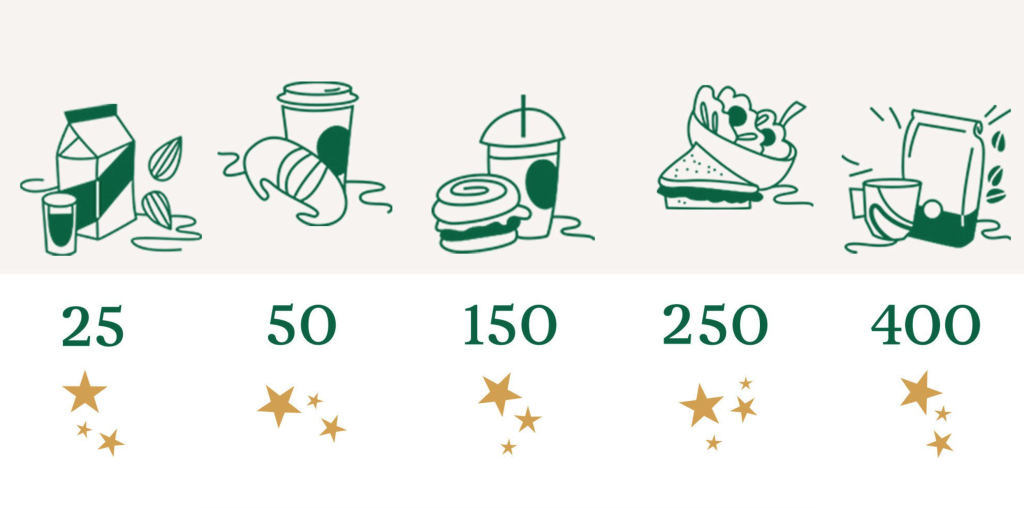
Example: Starbucks Rewards
Customers earn stars for each purchase at Starbucks, which can be redeemed for free drinks or food.
2. Frequency-based loyalty programs
Industries with frequent transactions, such as coffee shops, airlines, and retail stores, can encourage customers to return and accumulate benefits through ongoing subscriptions. Customers are segmented based on engagement or spending, with higher tiers receiving greater rewards and exclusive benefits.
Example: Sephora Beauty Insider
Sephora offers rewards and perks based on how often customers shop and spend.
3. Alliance loyalty programs
Multiple businesses partner to offer a single loyalty program that allows customers to earn and redeem rewards across different brands. A typical example of these is luxury brand alliances to provide a combined offer to users for discounts on different products.
Example: Costco Wholesale Membership
Costco’s membership program allows customers to shop at its stores and website, offering bulk discounts and exclusive access to specific products and services.
Touchpoint #5. Social Media Advocacy
A surge of mobile shopping apps is transforming how brands are evaluated. These shopping apps are bursting with features that help the users to browse, simplify prices, compare products, and effortlessly check out reviews. On top of that, social media keeps customers in the loop about their friends’ shopping preferences and feedback on purchases. All this combined prompts even your most loyal customers to explore other options, shaking up usual marketing strategies. Enter interactive loyalty schemes and word-of-mouth advocacy.

1. Gamified loyalty programs
If you want to engage existing customers through social media channels a gamified loyalty program helps you to create campaigns that drive customer loyalty. Customers participate in games, challenges, or competitions to earn rewards or discounts.
2. Referral and advocacy programs
Referral programmes are for those customers who have found value in your product or service and can refer more friends to you. These customers act as brand advocates. Referring new customers and advocating brands on social media generates momentum.
Example: Uber’s Refer a Friend
Uber rewards customers who refer friends with ride credits.
Summary
We’ve seen how customer loyalty can be improved through marketing campaigns that target customers across multiple channels. We’ve also explored the impact of omnichannel marketing, which builds a unified experience for customers and allows them to engage with brands on multiple platforms.
Building customer loyalty requires consistency in providing quality experiences and keeping up with how your customers engage with your brand. Remember: personalisation is key! Think about better ways of tapping into existing knowledge and creating strong personal relationships with customers. Therefore, if you are looking to build customer loyalty, why not give omnichannel marketing a try with OmniEngage? Sign up today and see the results for yourself!

- State of Omnichannel Marketing in 2023 – a report by Amazon and Digiday ↩︎
